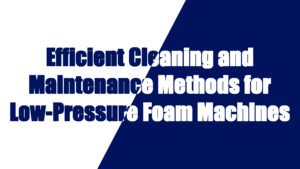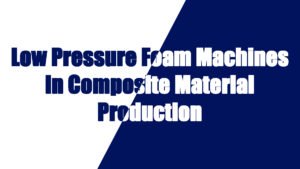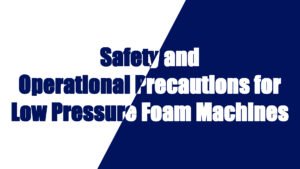In the production process of elastomers, which are polymer materials with elastic properties, there are several key factors that need to be carefully managed to ensure the final product meets the desired performance and quality standards. Elastomers are widely used in applications ranging from automotive parts to industrial seals and consumer goods, and achieving consistent and high-quality results depends on precise control over various aspects of the production process.
1. Raw Material Quality
Purity and Consistency of Raw Materials: The quality of elastomer production heavily depends on the quality of the raw materials. This includes the rubber (natural or synthetic), curing agents, accelerators, fillers, and other additives. Impurities or inconsistent material properties can affect the polymerization process, leading to defects in the final product such as uneven texture or performance degradation.
Source of Materials: Sourcing from reliable suppliers who provide consistent batches of materials is critical. Ensure all materials meet the necessary industry standards and specifications (e.g., ASTM, ISO).
2. Temperature and Humidity Control
Temperature Sensitivity: Elastomer production often involves the use of temperature-sensitive chemicals, such as vulcanizing agents and accelerators. The curing or vulcanization process, which is a crosslinking of polymer chains, is highly dependent on maintaining a precise temperature range. Deviations from the optimal temperature can result in incomplete curing or over-vulcanization, both of which can impair the elasticity and strength of the elastomer.
Humidity Control: Some elastomers, especially certain types of synthetic rubbers, are sensitive to moisture. High humidity levels can interfere with the curing process and lead to defects such as bubbles, blisters, or inconsistent hardness. It is essential to maintain controlled conditions throughout the production process.
3. Proper Mixing and Compounding
Homogeneous Mixing: During elastomer production, mixing of the rubber base with fillers, curing agents, and other additives must be done thoroughly to ensure uniform distribution of all components. Poor mixing can lead to inconsistencies in material properties, such as varying hardness or elasticity across the finished product.
Compounding: Compounding involves blending various ingredients into the base polymer to achieve desired properties like strength, durability, or flexibility. The balance of these ingredients—such as plasticizers, curing agents, pigments, and antioxidants—must be precisely controlled to maintain product consistency and performance.
4. Curing Process (Vulcanization)
Curing Time and Temperature: The vulcanization (or curing) process is critical in transforming the raw rubber into an elastic, durable elastomer. The curing time and temperature must be carefully controlled to achieve the right level of crosslinking without under-vulcanizing (resulting in poor mechanical properties) or over-vulcanizing (which can cause brittleness).
Curing Agent and Accelerator Levels: The amount of curing agents and accelerators used should be precisely calculated based on the type of elastomer being produced. Variations in these chemicals can cause either incomplete crosslinking or excessive crosslinking, leading to a reduction in elasticity or toughness.
5. Equipment Calibration and Maintenance
Precision of Equipment: The equipment used for mixing, molding, extrusion, and curing elastomers must be calibrated to deliver consistent results. Poorly maintained or miscalibrated equipment can lead to defects such as uneven product thickness, air bubbles, or poor material flow.
Routine Equipment Maintenance: Regular maintenance of mixing, curing, and molding equipment is necessary to prevent malfunctions. Mechanical wear and tear, like worn molds or clogged pipes, can lead to defective parts and disrupt the production process.
6. Mold Design and Control
Mold Temperature and Pressure: In molding elastomers, the temperature and pressure of the molds should be controlled precisely. Uneven or fluctuating mold temperatures can lead to warping, bubbles, or incomplete vulcanization. The mold pressure must also be optimized to ensure that the elastomer flows evenly and fills the mold completely without creating voids or defects.
Mold Design for Uniformity: The design of molds should consider the elastomer’s flow properties. Poorly designed molds that don’t allow for proper material flow can result in incomplete curing or deformation. Additionally, mold release agents must be chosen carefully to avoid contamination of the product.
7. Post-Curing and Cooling
Post-Curing Process: Some elastomers require post-curing (after the initial vulcanization) to ensure the complete crosslinking of the polymer chains. This can be done by heating the elastomer in an oven or autoclave to further enhance its mechanical properties.
Cooling Rate: Cooling must be controlled to avoid thermal stresses that may cause warping or cracking. Rapid cooling can induce internal stresses, while slow cooling might result in uneven curing.
8. Quality Control and Testing
Material Testing: Throughout the production process, material testing (such as hardness tests, tensile strength tests, elongation at break, etc.) should be performed regularly to ensure the final product meets the required specifications. Testing ensures that the elastomer will perform as expected in its end-use application.
Inspection for Defects: Visual inspection for surface defects like bubbles, cracks, or color inconsistencies is essential, especially in elastomers used for high-performance applications like seals or gaskets. Non-destructive testing (NDT) methods, such as ultrasound or X-ray, may also be employed for internal defect detection.
9. Health, Safety, and Environmental Considerations
Chemical Safety: The chemicals used in elastomer production can be hazardous to workers. Proper handling, storage, and disposal of materials like accelerators, curing agents, and plasticizers are essential to protect personnel and the environment. Regular training on safety protocols is crucial for all workers involved.
Emission Control: Some elastomers and their production processes may emit harmful fumes or volatile organic compounds (VOCs). It’s vital to install proper ventilation systems and implement emission control practices to reduce environmental impact and comply with regulations.
10. Recycling and Sustainability
Recycling of Scrap Materials: Elastomer production often generates scrap material that can be recycled. Developing a recycling system to reuse these materials can reduce waste and lower production costs. Some elastomers are easier to recycle than others, and manufacturers should explore options for recycling to make the process more sustainable.
Sustainable Materials: With increasing demand for eco-friendly products, manufacturers are focusing on developing elastomers made from renewable or biodegradable materials. The use of bio-based monomers and sustainable additives can help reduce the environmental impact of elastomer production.
The production of elastomers requires careful management of various factors, including raw material quality, temperature control, equipment maintenance, curing processes, and mold design. By focusing on these critical areas, manufacturers can produce elastomers that meet quality standards and perform reliably in their end-use applications. Moreover, addressing safety, environmental, and sustainability concerns can ensure the long-term success and compliance of elastomer production operations.




































